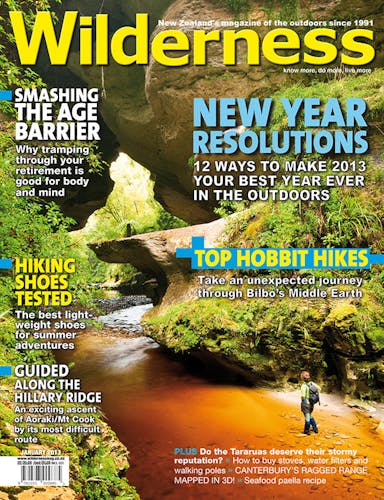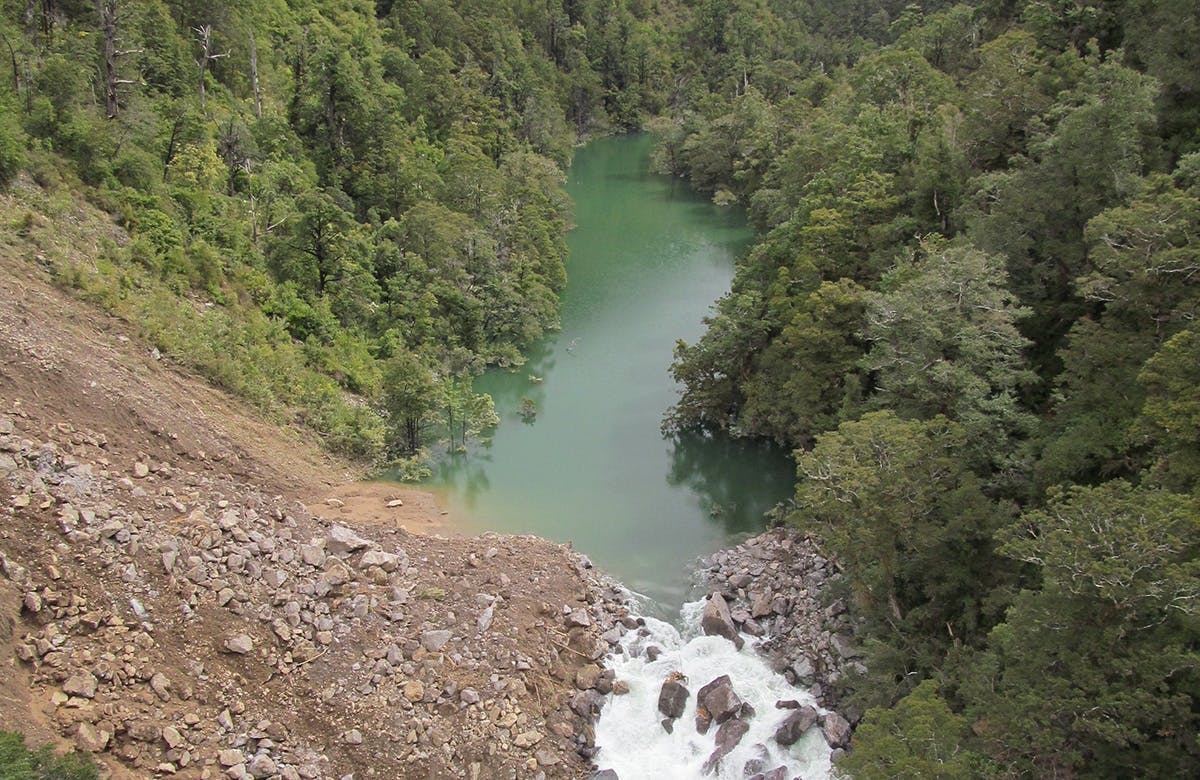Letter of the month
Oh, the irony
I don’t know if your readers saw the irony in the December issue of Auckland trampers drawing attention on page 71 to the incredible lack of huts in the north and on page 11 we see Kime Hut in the Tararuas is to be replaced because Wellington trampers find it too cold!
Why? The place isn’t more than 40 years old and I thought it was luxury last time I was there.
Mind you, I have probably been hardened by sleeping in unlined Kaimai huts or camping out beside the charred ruins of other huts never replaced.
Adding to the hardening process was another DOC action. Some years ago it took out the stoves from two Kaimai huts: Daly’s Clearing and Te Rereatukahia. When we wrote a letter of complaint we were informed that heating was unnecessary as modern trampers carried polypro to keep warm.
I’m surprised that this policy has not been carried out for Wellingtonians.
– Bryan Dudley, President Auckland Associated Mountain Clubs
* Our letter of the month correspondent receives a Steripen Emergency water purifier valued at $99.95 courtesy of www.outfitters.net.nz. Send your letter to editor@lifestylepublishing.co.nz for a chance to win.
Hutless in the north
If Al Morrison says sacrifices will have to be made elsewhere if the north is to get more huts (Hutless in the north, December 2012), then so be it. A good place to start would be Kime Hut. It makes no sense to replace a hut with many years’ life left. How is it that Moss Creek in Coromandel Forest Park burned down years ago and was never replaced and yet DOC is set to replace a still viable hut?
Brian Dobies’ comments, in the Walkshorts article in the same issue, that Kime is cold, dark and damp would apply to many huts. Kime is in a cold, damp and often dark location and if the nearby Maungahuka Hut is anything to go by, the revamped Kime will be light, cold, damp and draughty. Glass, even double glazing, is a very poor insulator compared to insulated wall so there is going to be an inherent trade-off in locations like Kime between light and warmth – and warmth is relative anyway.
We literally crawled into Kime one day in a blizzard, after having first stumbled into the snow-covered tarn and were unconcerned it didn’t have double glazing or was a little damp, just delighted to be there. We don’t need or want all the comforts of home, just shelter from the storm.
Sandra Lee fought for, and got, an extra $300m (approx) over 10 years for huts in the early 2000s. One gets the feeling at least some of this money has been squandered on grandiose or poorly-conceived projects.
I wrote to the minister in 2005 when I discovered a new hut had been built on the banks of the Poulter River, virtually in sight of two existing huts (Worsley and Trust Poulter). DOC’s excuse was there was no hut on the true left if the river flooded. OK, but why build an extravagant 10 bunk model? If you arrive at the left bank of a flooded Poulter you are clearly a capable and suitably equipped tramper.
– Bruce MacKenzie, email
I found the article ‘Hutless in the north’ interesting. I certainly find huts are good when I go tramping with my wife and small children since we can’t carry more than one tent.
I have always been puzzled why DOC only had one hut on Great Barrier Island (up until last year when it added a second). The island has the potential to offer a fantastic hut network if only DOC added a couple more. It’s right on Auckland’s doorstep, too.
– Wayne Pooley, Auckland
Hut pass value declining
I quite agree with the comments in the article ‘Hut pass losing value for northerners’ (Walkshorts, November 2012) – and it is not just in the North Island. Angelus Hut in Nelson Lakes National Park is a backcountry hut, however, from November to April one has to book with a $20 fee.
DOC has also imposed penalties (double) for arriving without booking, even if you have a hut pass. DOC is also proposing huts in the Dart-Rees to follow suit. Next it will be the Greenstone-Caples and from there where?
I understand DOC’s concern with overcrowding and safety and the need to book, but that should not devalue the annual hut pass.
– Peter Vella, email
Back to basics
Congratulations on the return to ’Wilderness roots’ in the provision of a bumper December 2012 edition chock full of tramping trips! As a longtime subscriber, I am totally delighted. Thank you.
My only hope is that that not all of Christchurch heads to Ice Lake, as our party had only just agreed to head that way for our 2012 Christmas/New Year expedition because we thought it was ‘off the beaten track’!
I’ll get back to you on the numbers we get to share this part of New Zealand’s wilderness with.
– Helen Nugteren, Arthurs Pass Eco Lodge
Another landslide lake
The interesting article ‘See more landslide lakes’ (November 2012), was very timely. Just before this article was printed, New Zealand’s newest landslide lake was formed. A massive 30m wide landslip in the Wangapeka Valley on October 20 has formed a 1000m-long lake, 10m deep. It’s an addition to Kahurangi National Park’s 30 or so named lakes.
DOC has cut some new rough sections of track around the lake to replace the flooded track, ensuring access for trampers along the Wangapeka Track. It’s well worth a visit and situated only two-hours from Rolling Junction.
– Robert Wopereis, Nelson
Recipe’s fit for the pack
The recipe for ‘Corn and feta fritters’ (Wild cuisine, December 2012) looks and sounds really nice.
Unfortunately I have asked both the supermarket and Binn Inn for ‘dried corn’ – both say they don’t stock it and don’t know where to get it. Also where is the best source for dried egg powder?
I have tried the ‘De-Hy Hummus’ recipe (October 2012) and like it. It’s very easy to prepare and dehydrates really well.
For anyone else wanting to make this, I have also tried adding sun dried tomatoes and sweet chilli sauce which I have found produces a nice result. I will continue trying other variations – it will now be a regular item in my pack.
– Simon Thompson, email
Wild cuisine editor Mark Banham responds: For the egg replacement, we use ‘No Egg’ by a company called Orgran. It’s designed for people who are allergic to eggs, but it’s also great for people who are just allergic to having the contents of their backpack coated in egg after they break.
I’ve also had a bit of trouble tracking down dehy corn lately. So really the only options these days are to use Continental’s ‘Surprise’ dried corn and peas mix or to take matters into your own hands and home dehydrate fresh sweet corn. I usually go with the latter.







